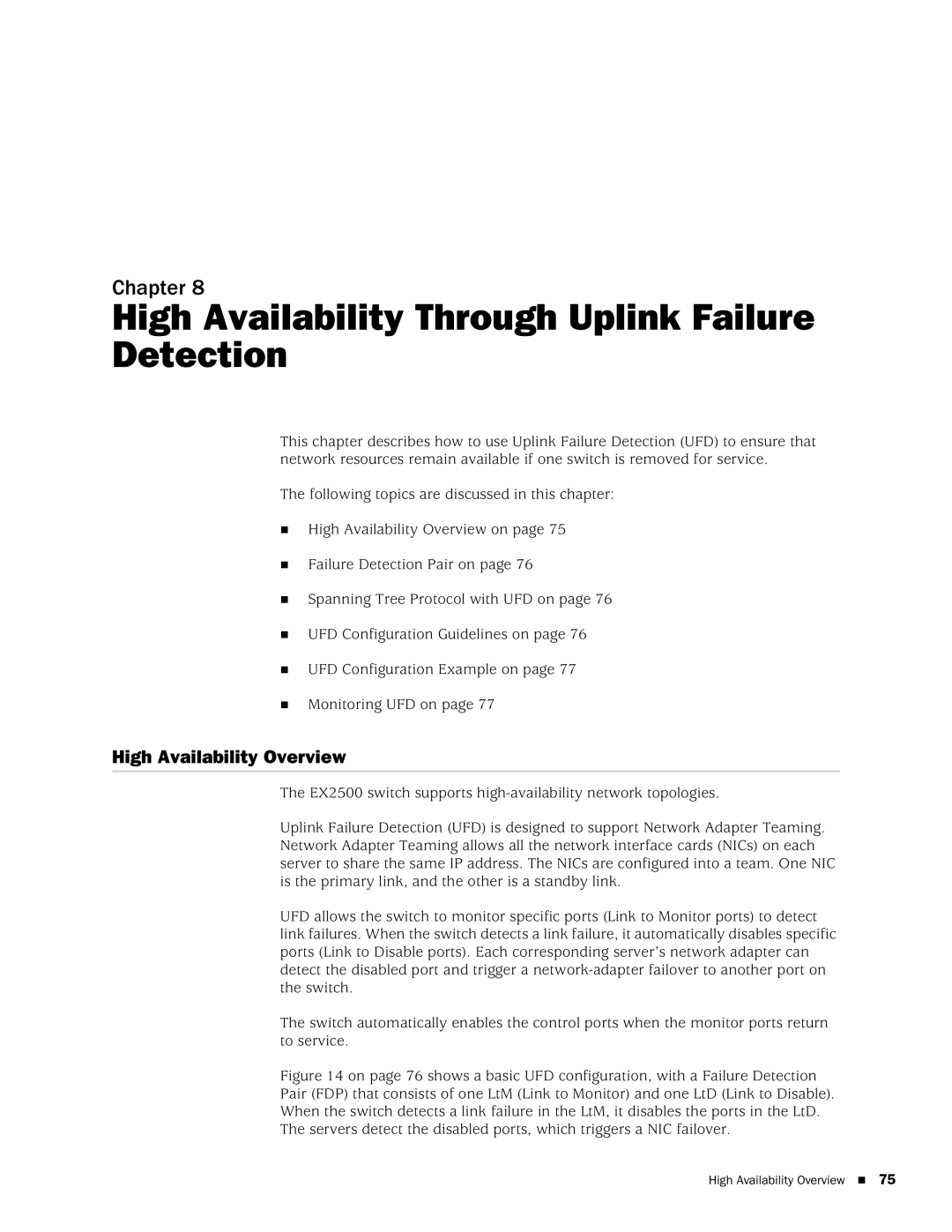Chapter 8
High Availability Through Uplink Failure Detection
This chapter describes how to use Uplink Failure Detection (UFD) to ensure that network resources remain available if one switch is removed for service.
The following topics are discussed in this chapter:
High Availability Overview on page 75
Failure Detection Pair on page 76
Spanning Tree Protocol with UFD on page 76
UFD Configuration Guidelines on page 76
UFD Configuration Example on page 77
Monitoring UFD on page 77
High Availability Overview
The EX2500 switch supports
Uplink Failure Detection (UFD) is designed to support Network Adapter Teaming. Network Adapter Teaming allows all the network interface cards (NICs) on each server to share the same IP address. The NICs are configured into a team. One NIC is the primary link, and the other is a standby link.
UFD allows the switch to monitor specific ports (Link to Monitor ports) to detect link failures. When the switch detects a link failure, it automatically disables specific ports (Link to Disable ports). Each corresponding server’s network adapter can detect the disabled port and trigger a
The switch automatically enables the control ports when the monitor ports return to service.
Figure 14 on page 76 shows a basic UFD configuration, with a Failure Detection Pair (FDP) that consists of one LtM (Link to Monitor) and one LtD (Link to Disable). When the switch detects a link failure in the LtM, it disables the ports in the LtD. The servers detect the disabled ports, which triggers a NIC failover.
High Availability Overview 75
